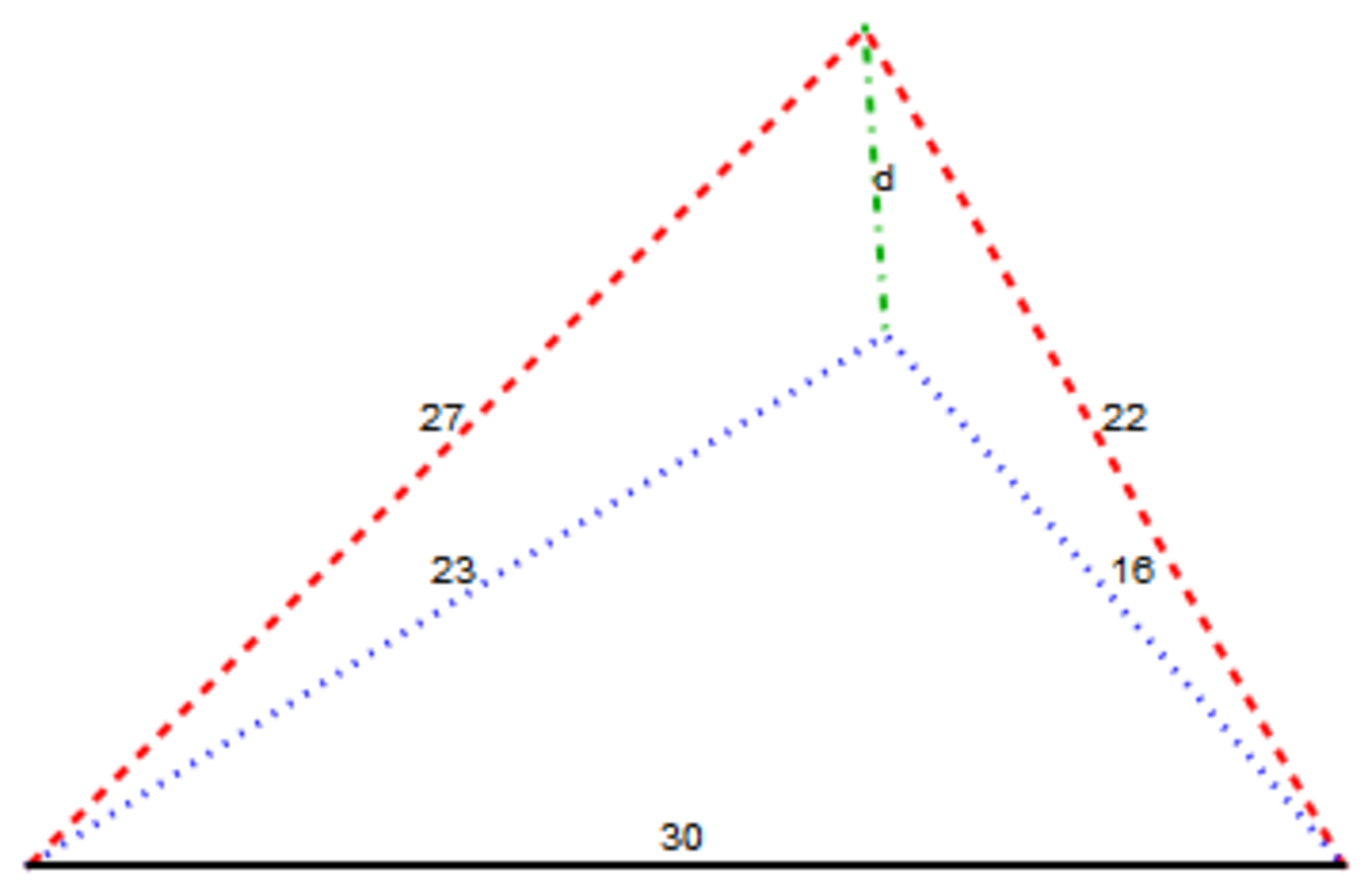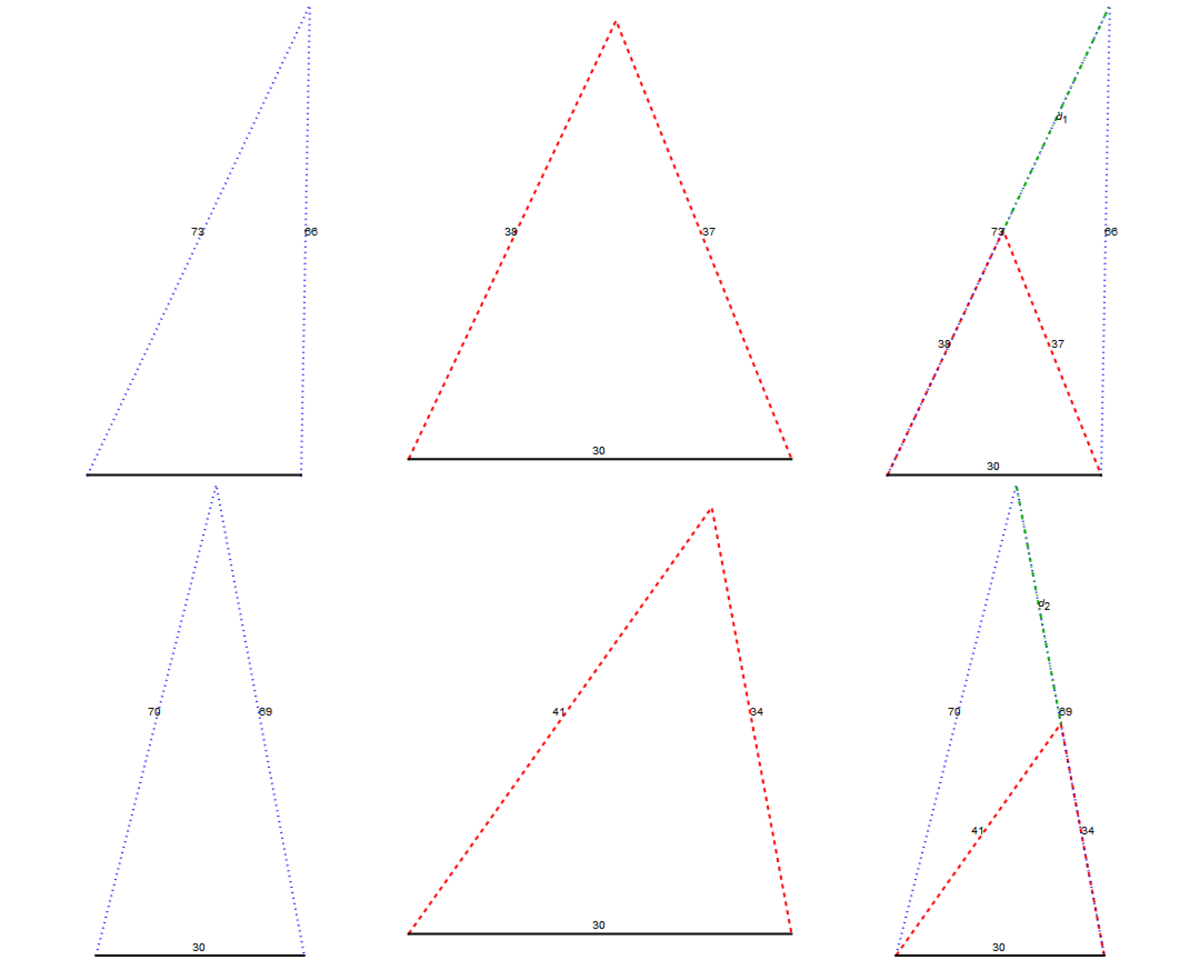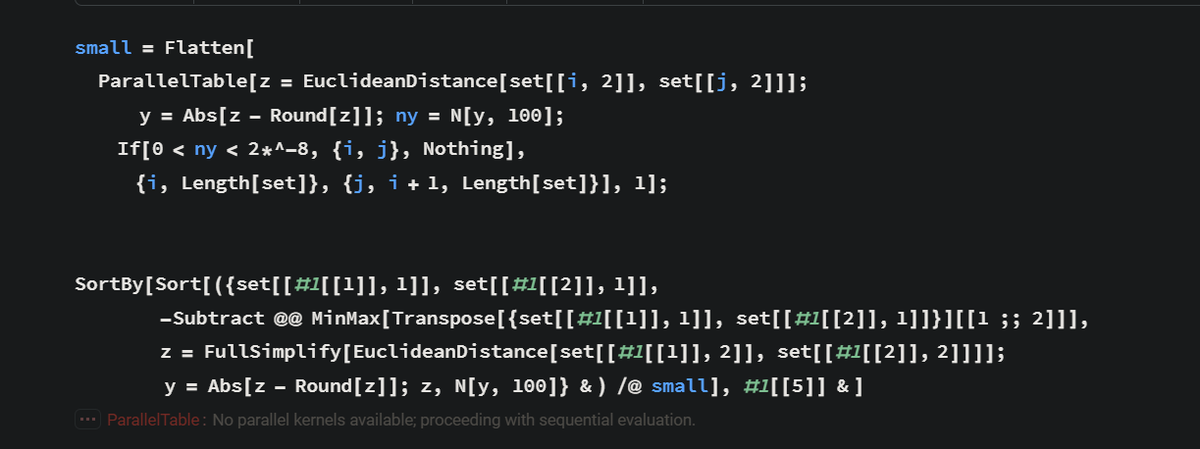For Pi Han Goh and Chris Lewis, since you asked the question that led to this problem.
Pi Han Goh and Chris Lewis asked the question of from where did I get the Approximate the answer based on distances between SSS triangles' upper vertices problem. Those data came from a web search on the phrase "almost integer". There was an implication that finding such triangles was difficult. It was not. It was computationally intensive though. That is strictly background.
Here is the graphic from the other problem. The markings are similar in this problem.

Now, this problem compares the
and the
distances as described below.

2020-10-11T14:41Z:
Because, some people had commented that the diagram was difficult to understand, I am adding another version that I hope will help. It contains the same information spread out more.

In case the numbers giving the side lengths of the triangles are hard to read in the images, here are they are in plain text: {{34, 41, 30}, {69, 70, 30}} and {{37, 38, 30}, {66, 73, 30}}.
The distance are reduced to their difference from the nearest integer, i.e., the distances are the Euclidean distances between the two triangles in each graphics. The triangles are placed so that each pair of triangles share a common, horizontal, (x)-axis base and that the third vertex of each triangle on the positive side of the -axis). I assumed that the left end of the base is at the origin. I found it simpler that way. The distances (the only reason for the subscripts on the values is to distinguish between the triangle pairs; there is no other operational purpose) are then reduced to their difference from the closest integer, i.e., where means absolute value and mean to round to the closest integer. No disambiguation rule should be necessary as the distances are very close to integers.
The answer is the absolute value of the reduced distances (themselves less than ) multiplied by and rounded to an integer.
The answer is 0.
This section requires Javascript.
You are seeing this because something didn't load right. We suggest you, (a) try
refreshing the page, (b) enabling javascript if it is disabled on your browser and,
finally, (c)
loading the
non-javascript version of this page
. We're sorry about the hassle.


I did a brute force search of triangles with a horizontal base of length 30 and sides no greater than 99. I assumed that the left end of the base was at the origin and the triangle pair was positioned as described in the problem.
When I discovered that there were two sets of triangles with same reduced vertex distances, this problem arose. The common unreduced distance is 2 1 3 0 1 3 ( 5 3 1 5 5 − 1 7 5 1 1 9 7 1 6 1 ) ≈ 3 5 . The reduced distance is 1 . 7 5 0 6 6 ∗ 1 0 − 9 , which is even smaller than the reduced distance in the other problem.
For those of you who can read Wolfram Mathematica code: